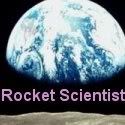The Last Hubble Mission Part 4
>> Wednesday, May 27, 2009

I know it's supposed to be a writing exercise on Wednesday but, hey, HST SM-4 is a big topic so I'm continuing. Yesterday, of course, I talked about all the work they had to do to get the complement of instruments up and running, but the instruments are dependent on the spacecraft for pointing, power, communication, data handling, thermal protection and structure. And HST needed a bit of work, too. You can see a layout of the key HST systems here.
First off, there is the long put off battery replacement. HST's batteries have done a heck of a job over the last 18 years. A change in plan on the battery left them with some circuit mismatches (that have been corrected over past flights) but they are slowly but surely degrading now. All the new batteries are also Nickel Metal Hydride, but they are an improved setup and have a nifty little safety feature: an isolation switch.
Then there are the gyros. They've been problems before and HST-SM3 was broken into two missions as a result of an earlier failure. HST can fly and point with two of the six gyros (when it used to require three). The gyros are described as fantastic, but we've had to replace them several times. These new ones are supposed to be new and improved, but one of the units wouldn't fit (Rate sensor units=two gyroscopes) so a refurbished one from a previous mission was installed.
But wait, there's more. There's also the thermal blankets that have deteriorated thanks to the rough environment. HST SM-4 installed a number of New Outer Blanket Layers (NOBLs - because you can't have too many acronyms).
And the last minute problem that manifested only days before the first scheduled launch: the failure of one side of the Science Instrument Control and Data Handling system. We moved to the unused B side, but it was definitely something to fix if we could. Fortunately, this was one of those systems that was designed to be replaced. Be just had to blow the dust off our stored spare (figuratively speaking; Goddard has a great big clean room) and make sure it was still working. And stuff.
Then, it was just a matter of installing a Soft Capture and Rendezvous Fixture on the spacecraft (so we can send a robot deorbiting aide on it for a controlled reentry), wipe the windshield, check the dipstick and give her tires a last kick.
It was a heck of a lot of work, a real challenge, but thanks to some good planning and lots of old fashioned elbow grease, she's in as good a shape as we can manage. Hopefully, she'll be giving us more gorgeous pictures and cool data for years to come.





.jpg)










.jpg)



They did an awesome job,we got a brand new and better Hubble can't wait to see the new results and the things they will learn from them.
Thanks for sharing the Hubble mission - it will be interesting to see new images from it.
How many years do you think?
Mother, it's a good question. I don't have a good answer. Everything is now so much older than the planned lifetime that figuring out what will fail next is problematic.
If past experience is an example, the gyros are a limiting factor such that I don't think more than five or six more years are likely. However, something we never expected (such as the Science Instrument C&DH system)can fail and throw that completely off. However, many of the limiting factors for other satellites were addressed here like batteries and instruments.
Hopefully, we'll get enough years to bridge the gap until the James Webb telescope is launched.
So, optimally, five or six more years of fantastic images and cool science?
Glad to hear it.